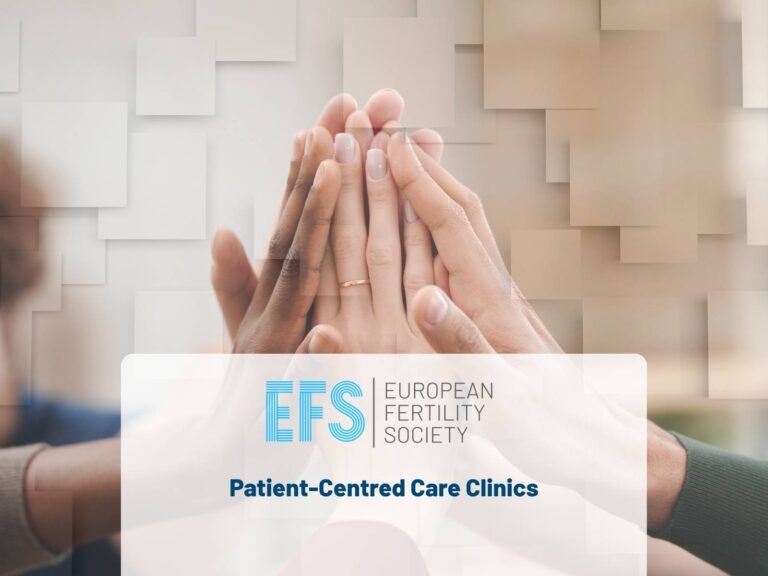Last Updated : November 26, 2025
IVF success rates are not a single number. They depend on how a clinic defines “success” (biochemical pregnancy, pregnancy at 12 weeks, or live birth), when it measures outcomes (per cycle start, per embryo transfer, cumulative across cycles), and who is being treated (age, medical history, diagnosis). Your age and individual profile often matter more than a clinic’s headline percentage. Use age-grouped, like-for-like figures and ask for your personal likelihood, not the clinic average.
IVF Success Rates Explained – Summary
- Success rates differ by definition: per cycle start, per embryo transfer, cumulative, and by outcome (biochemical, 12-week pregnancy, live birth).
- Age is pivotal for own-egg IVF: results drop markedly after 40; donor-egg outcomes are largely independent of recipient age.
- Comparisons are tricky: countries and clinics report differently; generic clinic averages may not match your diagnosis.
- USA & UK snapshots: USA (SART/CDC) shows strong age-tiered outcomes; UK (HFEA) reports by age with distinct patterns for own-egg and donor-egg cycles.
- Beware marketing and “guarantees”: high published rates and refund programs don’t equal medical certainty.
Best next step: request individualized odds from clinics and, where available, use validated predictors that factor in your specifics.
IVF success rates by country
There are differences in IVF outcomes between popular countries. It is not recommended, however, to assess the treatment quality between countries solely based on IVF success rates. Differences in IVF success rates between countries may not reflect differences in the quality of IVF treatment between countries and the same rule applies when comparing the IVF clinics.
Success rates of IVF by age—European IVF clinics
The effectiveness of IVF treatment with own eggs will vary significantly depending on the age of a female patient. Additionally, there are many other parameters that influence the effectiveness of treatment. These include, amongst others:
- age of a woman
- BMI
- quality and the number of oocytes collected
- quality of the male partner’s sperm
Always ask about your own individual chances and not about average IVF success rate of a clinic. When publishing data on treatment effectiveness, the best clinics will take different patients’ age groups into account. However, this still might not be sufficient to be able to effectively compare success rates between IVF clinics.
The risk is known to increase with maternal age when success rates decline. Pre-implantation genetic screening can improve implantation and pregnancy success, rates and maximises the opportunity of transferring only euploid (chromosomally equal) embryos. The aneuploidy testing follows an embryo biopsy, where a small number of cells are removed and then analysed.
The following table draws upon data collected from European registries by ESHRE (European Society of Human Reproduction and Embryology) and provides a really useful comparison of live birth rates by patient age and shown as percentages. The first thing you will notice about the data is that there is a substantial decrease in IVF success rates for women over 40 with the exception of one country. The optimum age for IVF with own eggs is under 34 and success rates can fluctuate anywhere between 25% and 30% and there is also a smaller decrease in success rates for those women aged between 35 and 39 compared to their younger peers. The exception to most of these figures is Latvia but with only five clinics and a smaller number of cycles being carried out in the country compared to somewhere like Spain you would expect to see rather different results.
This comparison table is a useful starting point but as we shall see throughout this article, success rates are subject to complex variables and are collated and presented in different ways.
| IVF with own eggs in popular countries in Europe* | <34 | 35-39 | ≥40 |
| Spain | 25.8 | 23.2 | 11.7 |
| Portugal | 26.6 | 21.2 | 14.3 |
| Czech Republic | 29.7 | 21.6 | 8.9 |
| North Cyprus** | no data | no data | no data |
| Greece | 30.4 | 22.8 | 9.7 |
| Ukraine | 25.4 | 22.7 | 14.1 |
| Poland | 30.5 | 25.9 | 12.9 |
| Russia | 30.3 | 24.1 | 12 |
| Latvia | 29.4 | 33.6 | 20.7 |
| Denmark | 30.4 | 20.2 | 12.3 |
Source: ART in Europe, 2017: results generated from European registries by ESHRE*
Supplementary Table SX Aspirations, pregnancy and delivery rates by age distribution (years) of women treated with ICSI in 2017.
Pregnancies per embryo transfer.
**North Cyprus is the self–proclaimed state recognised only by Turkey and is not providing and data to ESHRE EIM Consortium.
Success rate of IVF with donor eggs—Europe
In the case of donor egg success rate, the effectiveness is independent of the patient’s age. However, remember that your own treatment history and its medical parameters may be important for the expected result. That is why you should always ask the IVF experts about your personal chances of success for IVF with donor eggs, and not about the average effectiveness of treatment.
The following table produced by ESHRE (European Society of Human Reproduction and Embryology) uses data collected by different European registries to show success rates in countries that offer fresh and frozen egg donation treatments. No information is recorded about the age of patients as this does not have any direct impact on outcomes.
Interestingly the countries that perform the largest number of cycles in Europe including Spain suggest that fresh cycles appear to attract a higher success rate. IVF success rates for frozen cycles vary between 34.4% in Poland to a high of 61.6% in Ukraine. According to the data which was recorded in 2017 Ukraine achieved the highest frozen embryo transfer success rates at 62.2% and this compared to the lowest success rate of 23.1% which was recorded in the Czech Republic.
Once again, although this table is useful do remember that success rates for egg donation may be collated and presented differently by clinics and countries.
| Egg donation success rates in popular countries in Europe* | Pregnancies per fresh ET (%) | Pregnancies per thawed ET (%) |
| Spain | 54.7 | 51.1 |
| Portugal | 52.6 | 40.6 |
| Czech Republic | 42.2 | 23.1 |
| North Cyprus** | no data | no data |
| Greece | 54.7 | 50.1 |
| Ukraine | 61.6 | 62.2 |
| Poland | 34.4 | 44.7 |
| Russia | 48.0 | 45.0 |
| Latvia | 39.5 | 42.3 |
| Denmark | 38.6 | 33.7 |
Source: ART in Europe, 2017: results generated from European registries by ESHRE*
Supplementary Table SVIII Pregnancies and deliveries after ED (fresh and frozen cycles) in 2017. In Egg Donation cycles, the age of the recipient women had no influence on outcomes. Pregnancies per embryo transfer (fresh and frozen)
**North Cyprus is the self–proclaimed state recognised only by Turkey and is not providing and data to ESHRE EIM Consortium.
IVF success rates and choosing an IVF clinic
Success rates are important but they’re not everything. Patients should go beyond headline percentages and ask:
- Are these rates relevant to my age group and diagnosis?
- Is this clinic reporting live births or biochemical pregnancies?
- Is the clinic specialised in cases like mine (e.g., low ovarian reserve), which might make general comparisons unfair?
A clinic’s ability to provide a personalised treatment plan and strong patient support is just as crucial as its overall numbers. Many respected destinations such as Spain, Greece, and the Czech Republic are known not only for high success rates, but also for robust standards, individualised protocols, and international care infrastructure.
Struggling to Find an IVF Clinic Abroad? Connect with our Patient Care Advisor today!
How IVF success rates are calculated and presented by fertility clinics
There is not a standard and accepted way for treatment providers to share information regarding success rates of IVF. Comparing IVF treatment success rates between clinics in the same country can be challenging sometimes but when you attempt to compare rates between different countries the task becomes even harder. Defining, calculating and reporting success rates for IVF varies between clinics and as a patient you should be aware that the criteria used to define rates will impact greatly on the final figures quoted.
To help you compare clinics and distinguish between the various criteria fertility teams employ to report success rates of IVF we have illustrated some of the benchmarks used.
IVF success rates presentation
IVF success rates presentation involves various benchmarks and methods used by clinics to report and calculate their success rates. These methods can include success rates per start of the cycle, per embryo transfer and successful pregnancy, and cumulative success rates over multiple cycles. Understanding these different criteria can help patients better interpret the figures and assess their chances of achieving pregnancy through assisted reproductive technologies.
IVF success rates per start of the cycle
This method of reporting success rates is based on the chances of success with repeated cycles rather than on one cycle. This criterion is useful for patients who are assessing their overall chance of achieving successful pregnancy. The tool is very accurate when combined with age or a patient’s medical condition.
IVF success rates per embryo transfer
This reporting method is usually calculated on the basis of the number of patients reaching the stage of having embryos that are ready to be transferred. This rate does not refer to clinical pregnancy rates or live birth rates that can vary from this baseline figure.
Cumulative IVF success rates
This method is used to reflect the overall effectiveness of a particular treatment over a specific number of cycles.
IVF success rates calculation
IVF success rates calculation can vary significantly based on different outcomes such as biochemical pregnancies, pregnancies at week 12, and live births. These variations make it challenging for patients to analyze and compare success rates effectively, especially when fertility clinics use different criteria.
A biochemical pregnancy
A biochemical pregnancy refers to a miscarriage within the first four or five weeks of the embryo implanting.
Pregnancy at week 12
This is usually when the first ultrasound takes place and is the moment when the foetus is fully formed.
Live birth
This calculation is triggered when a baby is born and displays signs of life whatever gestational age it has reached.
It is easy to see therefore why so many patients find trying to analyse and compare success rates so difficult when they are presented in different ways and calculated on the basis of different outcomes. The IVF success rates you will see on clinic websites will invariably be generic, that is to say, they will be measured against patients with different treatment requirements which could be as diverse as male factor infertility or ovulatory disfunction. It may also be difficult to compare a generic clinic with one that helps patients with a specific condition like low ovarian reserve – the latter may be more successful at treating such patients than generic clinics but due to the nature of the condition it follows that their overall success rate may appear low in comparison with other providers.
IVF success rates in the USA
The IVF success rates in the USA are monitored by SART (Society for Assisted Reproductive Technology) and published by CDC (Centers for Disease Control and Prevention). Due to the large number of IVF cycles and accurate data collected from IVF clinics, SART may be a very good reference point for any patient undergoing IVF treatment.
IVF with own eggs—success rates by age in the USA
The average IVF procedure success rates – live births – for IVF with own eggs (including patients with all types of infertility diagnosis) in the USA are:
- 49.7% for women younger than 35
- 44.8% for women aged between 35 and 37
- 39.6% for women aged between 38 and 40
- and 22.6% for women older than 40
The IVF statistics above are presented as the percentage of embryo transfers resulting in live-birth deliveries and the results are based on 107,795 IVF cycles (2019)*.
IVF with donor own eggs (egg donation)—success rates in the USA
The average success rates of IVF transfers with donor eggs – live births – (including patients with all types of infertility diagnosis) in the USA are:
- fresh oocytes from the donor (fresh embryo transfer): 53.9%
- frozen oocytes from the donor (fresh embryo transfer): 45.8%
The IVF statistics above are presented as the percentage of embryo transfers resulting in live-birth deliveries and the results are based on 24,042 egg donation cycles (2019)*.
IVF success rate—UK
We have provided data in the following tables which illustrate some interesting differences between published success rates for IVF in the UK and Europe. Although there is no definitive data which points to the number of patients who travel abroad for fertility treatment from the UK we are aware that this number is significant. Feedback from patients themselves and clinics throughout Europe suggest that UK patients continue to travel for various reasons and this number does not appear to be reducing at all.
Patients from the UK obviously travel for different reasons. It may be down to success rates advertised by non-UK clinics or a combination of other variables including costs, access to treatments for older women, reduced waiting lists, access to treatments not readily available or legal in the UK, or because of the better availability of egg donors.
You will notice that overall success rates of IVF quoted in the UK tend to be bit lower than their European equivalents. However, it does better on average than European countries in terms of treating younger patients seeking IVF treatments using their own eggs. For instance, the UK boasts an average success rate of 32% for women under 35 using their own eggs – this figure is higher than in the European countries (showed as a pregnancy per embryo transfer) we feature in this article although it remains significantly lower than the figure quoted in the U.S. However, the IVF success rates for 40+ women appear to be lower than in European countries – this may be one of the reasons why a large number of women over 40 travel from the UK for IVF treatment and consequently the overall number of women who collectively receive IVF cycles in Europe is higher than the absolute number in the UK.
The differences in IVF success rates between the UK are Europe are more significant when we consider success rates for treatments with egg donors. In general, terms if we take overall success rates European treatment providers offer success rates which are 10% above the UK national average – even if we consider differences in data presentation – in the table above the egg donation success rates are presented as pregnancy per embryo transfer while in the UK they are presented as live births. We know from different countries that the reasons for patients travelling from the UK include the desire for anonymous donors, treatment approaches and cost, as well as success rates. The majority of patients travelling from the UK are seeking IVF treatments with donor eggs, and the number of such procedures in Europe dwarfs the number undertaken in the UK. The availability of egg donors and no waiting lists are also drivers for more patients travelling from the UK.
IVF success rates in the UK are published by the HFEA (Human Fertilisation and Embryology Authority) – the UK fertility regulator.
The IVF success rates for IVF with own eggs by age in the UK
The IVF success rates for IVF with own eggs by age in the UK vary significantly:
- 32% for women under 35
- 25% for women aged between 35 and 37
- 19% for women aged between 38 and 39
- 11% for women aged between 40 and 42
- 5% for women aged between 43 and 44
- 4% for women aged between 45 and 50
IVF statistics above are presented by HFEA as birth rates per embryo transferred and the results are based on 40,358 IVF cycles (2019)*.
The IVF with donor eggs success rates by age in the UK
Understanding these success rates within the context of age is crucial for individuals contemplating fertility treatments involving donor eggs:
- 34% for women under 35
- 37% for women aged between 35 and 37
- 31% for women aged between 38 and 39
- 33% for women aged between 40 and 42
- 35% for women aged between 43 and 44
- 31% for women aged between 45 and 50
IVF statistics above are presented by HFEA as birth rates per embryo transferred and the results are based on 5,368 egg donation cycles (2019)*.
Source: Fertility treatment 2019: trends and figures by HFEA
Misleading IVF success rates
Even if data regarding clinic success rates comes from a public report you still need to apply a degree of caution. Firstly, remember that medical teams can be ‘creative’ when measuring and reporting their success rates. They quite understandably want to show the highest numbers of IVF process possible to encourage more patients, and these figures will often appear to be significantly higher than the reported national average.
There is nothing wrong with the fact that an IVF clinic will want to calculate success rates based on their particular algorithm but be aware that those providers with higher success rates will ordinarily want to charge higher prices. It is therefore important for you to ensure these success rates are appropriate in your specific case.
It is worth also applying caution to IVF refund programmes which are now gaining popularity, which may “promise” a 100% success rate or a live birth. Such IVF packages are financial programmes that involve risk-sharing between the clinic and patients. From a purely medical perspective, they can’t guarantee anything (for instance, success rates, pregnancy success, live birth) but merely offer a money-back guarantee – “a refund” based on the expected outcome. That’s why they are often called IVF refund – guarantee programs.
IVF success rate calculator
How to check the prospects of a successful outcome based on your individual history?
Increasingly we are seeing technology employed to predict the likely outcomes of IVF treatment and the more sophisticated AI becomes the more likely we are to see more accurate predictor models.
One of the most accurate models that has been developed to predict the potential success of particular treatments was developed by the Society for Assisted Reproductive Technology (SART) in the United States. The SART Patient Predictor is a very sophisticated tool that has been evolving since 2006. Based on continual analysis of over half a million cycles and over three hundred thousand women the calculator is designed to predict the chances of successful outcomes based on an assessment of each patient’s personal situation.
Patients are requested to answer questions relating to their physical self such as height and weight as well as medical questions about any diagnosis they may have received. Each calculation is highly personalised and is based on the assumption that the individual has not received any IVF treatment prior to recording their details.
The patient predictor will then attempt to accurately predict your chances of a live birth as well as proving advice and information on the risks that might be associated with any IVF treatment. For instance, SART might predict the chances of multiple births as a result of multiple embryo transfers and quantify the danger from such procedures.
It is worth noting that the SART predictor is only one of the tools available to assess potential IVF outcomes and only features data captured from U.S. patients. As technology develops we are likely to see more tools which attempt to forecast outcomes and inevitably these will become more accurate in time.
One last caveat from us if you are thinking of, or currently using a predictor tool, it is always worth comparing the predicted success rates with the clinic of your choice. If there is a significant difference between a predicted figure and the success rate quoted by the clinic you will need additional time to evaluate the figures.
You may be interested in reading more about: IVF success rates calculators
IVF success rate—other resources
If you are looking for more information regarding chances of success when going through an IVF cycle we highly recommend checking out the resources below:
- The importance of 3 full cycles of IVF
- IVF success rate questions – questions answered by multiple fertility experts
- IVF success rate – USA national data by SART
- SART – IVF outcome predictor
- Choose a Fertility Clinic
Let TOP IVF specialists review your chances of IVF success
You can use our special tool and generate bespoke PDF-based inquiries regarding your IVF chances. The clinic of your choice may advise you of your potential treatment success rates based on your age and fertility health. You may find top-rated IVF clinics abroad here > and once you visit the clinic profile you may use the button “Review my IVF chances now >” to proceed with your inquiry.
IVF success rates – FAQs
How are IVF success rates calculated?
There is no definitive or standardised way of calculating IVF success rates. Treatment providers are well aware that patients treat success rates very seriously and largely base their choice of clinic on these. Consequently, it is in the interests of the clinic to promote favourable rates. They might calculate success in absolute numbers i.e., 1,000 patients per year are treated in the clinic and 500 live births are achieved or they may calculate success on another variable such as the number of patients who achieve a clinical pregnancy (confirmed by high levels of pregnancy hormone HCG, ultrasound showing a gestational sac or heartbeat).
What determines IVF success rate?
IVF success rates are created by treatment providers using a range of methods to record data. In some countries treatment providers are highly regulated and independent audits undertaken by national bodies or registries attempt to standardise the reporting of success rates. In other countries where regulation is not so tightly organised clinics are able to present success rates flexibly which means they will invariably highlight those treatment areas which are particularly successful or particularly in demand from patients.
What is the success rate of IVF on the first try?
This totally depends on a number of factors including whether the IVF cycle uses a woman’s own eggs or a donors; the age of the patient, their medical history and their particular diagnosis. Based on the figures we have been given in this article however that the success rate of IVF on the first try for a woman aged under 35 using her own eggs is around 30%. This figure drops to about 10% to 15% for women over 40.
Is IVF 100 percent successful?
No, even after forty plus years of successful IVF treatments nothing can be guaranteed. Success rates for women using their own eggs have risen over the last decade but this rise has been relatively slow. Success rates rise when treatments involve donor eggs or sperm but even then they might only rise to 50% to 60%.
Which IVF clinic has the highest success rate in Europe?
As success rates can be presented in different ways by clinics it is very hard to identify one clinic as the leader in terms of IVF success rates. There are European countries who have developed very successful track records and these tend to be the most popular destinations such as Spain, Greece or the Czech Republic. There are many other countries however who are ‘rising stars’ in the IVF field such as those countries in the Eastern part of Europe. As we have said throughout this article success rates need to be approached with a deal of caution, a clinic that boasts high success rates may not be the right one for you, bearing in mind your age and your specific treatment needs. Choosing the right IVF clinic is a personal choice; success rates are important but you do need to bear in mind many other variables which are specific to you.




